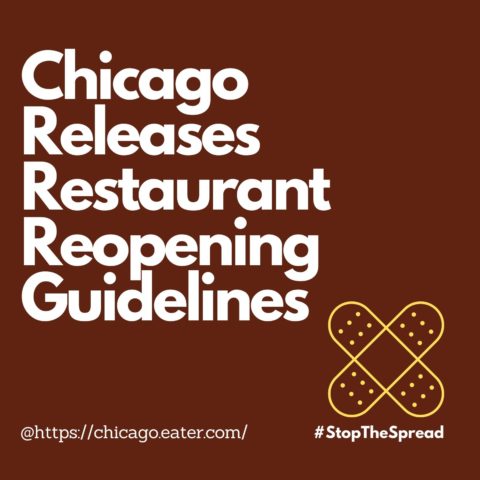
Customers can take their masks off while eating
While Chicago doesn’t know exactly when restaurants may reopen for outdoor dining, the city has released a set of guidelines that mandates both customers and workers to wear facial coverings, among other requirements. There’s now direction from the city level as the industry prepares for patio dining. Mayor Lori Lightfoot says that will happen before June 10.
There’s still no specific rules regarding capacity, which is something that Gov. J.B. Pritzker will need to establish. Over the weekend, the state released its own guidelines as restaurants in other parts of the state prep to open for outdoor dining as early as Saturday. In regards to the maximum number of people on a patio, the state’s rules say that will be determined by how many tables can fit inside a space while adhering to the six-foot rule. Meanwhile, the Chicago guidelines make no mention of sidewalks patios as there’s worry about blocking public ways and making it difficult for passersby to avoid contact with servers and customers. So far, the only guidance comes from the state which recommends restaurants “if practical [to] install impermeable barriers (e.g., plexiglass) from street and/or sidewalk traffic.”
Still, the city chimed in on a variety of topics: Tables will have to be six-feet apart, with parties no larger than six people per table. If tables can’t be moved, the restaurant should install a barrier (like plexiglass) to separate. Customers have to wear facial coverings and can remove them once seated and while eating. Waiting rooms can’t have more than 10 people and restaurants will have to mark off where people can stand and observe social distancing while waiting for the restroom. Also, say goodbye to self-serve drink stations.
Those are mandates, and there are also suggestions or best practices. For example, the city is tasking restaurant owners to be accountable for the health of its employees and customers. The city provided a few recommended methods to do so. Restaurants could conduct health screenings (take temperatures) or administer questionnaires. That will reveal health history like if respondents have suffered a temperature of over 100 degrees in the last 24 hours or recently been around someone who has. Restaurants could also post signage for customers and workers telling them to take a non-verbal pledge to not enter if they’re ill or been around someone sick.
The following are some of the guidelines’s highlights, view the list at the city’s website:
- Tables need to be six-feet apart. If they can’t be moved, barriers like plexiglass need to be installed.
- Impermeable barriers need to be installed in places — like counters, service tables, and registers — where observing the six-feet rule isn’t possible.
- Use clear markings to show guests where to stand and use proper social distancing in places customers routinely wait (restrooms, check-in stands, and registers).
- Six is the maximum number of people who can sit a table.
- No more than 10 people can be inside a waiting room or lounge, or other room where they can’t observe the six-foot rule and could remain together for “an extended time period.”
- Workers and guests need to wear coverings over their mouths and faces. Customers can remove the coverings while seated and eating.
- Workers need to know how to properly wear and remove facial coverings.
- Dishwashers needs face coverings, protective glasses, or face shields to protect them their eyes, noses, and mouths from “contaminant splashes.”
- Hand-washing facilities or hand sanitizer should be available for workers and customers.
- Workers need hand-washing training, and proper signage should be posted where needed.
- Workers should have a refresher in health and safety training upon returning to work. Courses include ServSafe Manager, food handler, delivery and takeout, plus reopening training from the National Restaurant Association.
- Workers should be encouraged to self-identify COVID-19 symptoms and stay at home if sick.
- If workers are feeling sick, they shouldn’t be forced to stay at work.
- Owners have the right to bar anyone with symptoms from entering or those without a facial covering.
- Make sure customers, visiting vendors, and visitors where facial coverings.
- Make sure highly touched surfaces get cleaned every half hour.
- Use disposable menus, containers, and condiment pouches when possible.
- Clean menus, containers, tables, and chairs. Use menu boards or digital menus when possible.
- Stop using self-serving drink and food stations.
The article is taken from https://chicago.eater.com/2020/5/26/21271215/chicago-releases-restaurant-reopening-guidelines-covid-19
